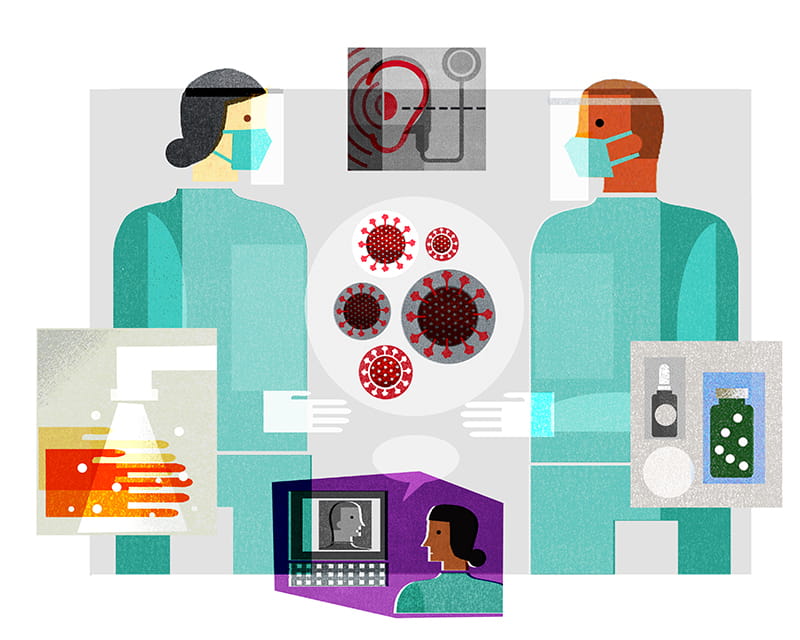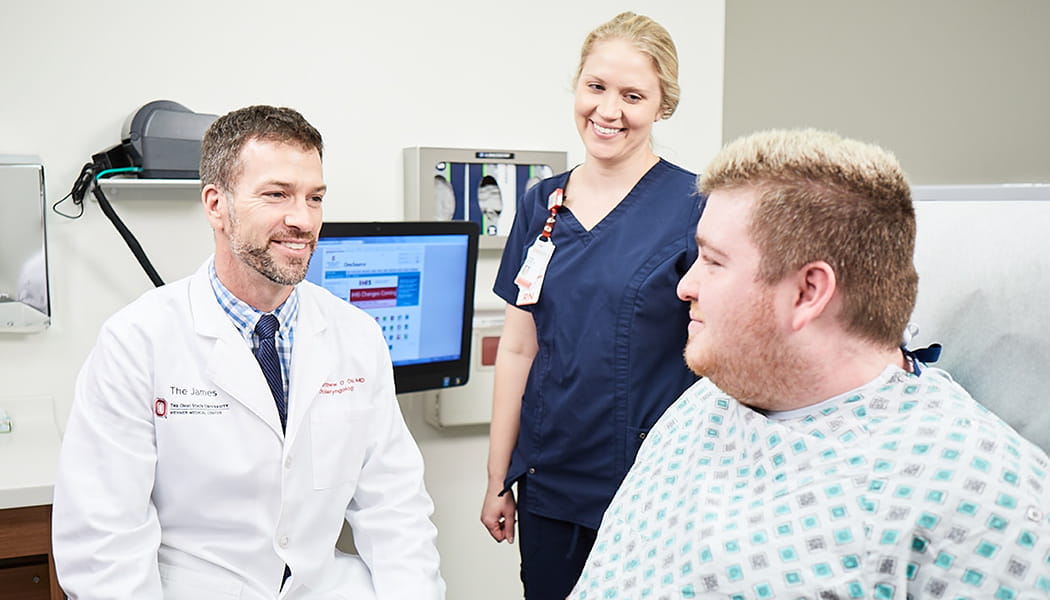
2020 Annual Report

As the need for complex head and neck surgeries continues to grow, few health systems offer the experience and expertise found at The Ohio State University Wexner Medical Center. Thanks to a comprehensive approach that integrates clinical care, research and training, Ohio State is helping transform head and neck treatments and outcomes.
In 2018 alone, physicians representing Ohio State’s Head and Neck service line saw nearly 25,000 clinic visits, performed 2,000 head and neck surgeries, and managed around 1,800 inpatient admissions. The service line, which includes the Division of Head and Neck Oncology, the Division of Medical Oncology and the Department of Radiation Oncology, spans the Department of Otolaryngology – Head and Neck Surgery and The Ohio State University Comprehensive Cancer Center – Arthur G. James Cancer Hospital and Richard J. Solove Research Institute.
“Ohio State has one of the busiest head and neck programs in the country, in part because our physicians have diverse subspecialty experience and perform certain procedures that are hard to find outside of major medical centers,” says Matthew Old, MD, medical director of the Head and Neck service line and director of the Division of Head and Neck Oncology.
Services include:
They also train other physicians on the latest reconstruction techniques.
In September 2019, 30 fellows from the U.S. and Canada attended the fourth annual Head and Neck Microvascular Fellow Boot Camp. It’s widely regarded as the preeminent course for microvascular surgery fellows who want hands-on exposure to traditional and uncommon free-flap procedures, and who want to interface with faculty from all over the world.
One day prior to the fellow boot camp, Ohio State hosts a national resident boot camp for those interested in head and neck cancer surgeries. Co-directed by head and neck surgeon Stephen Kang, MD, the program is taught by faculty from across the U.S. The residents create the defects that participating fellows must then reconstruct over the next two days.
With fellow course lectures and lab work focused on bone flap harvests, mandibular defects and reconstructions, soft tissue defects and boney inset plating, the two-day course teaches techniques for addressing functional and cosmetic impairments caused by head and neck cancer treatments.
“We’ve created an environment that offers microvascular head and neck fellows a unique set of resources,” says Dr. Old, boot camp co-director. “They use a defect-oriented approach to reconstruction on fresh cadavers and are taught by some of the best and brightest faculty. And because we bring in emerging technologies, our participants are among the first to train with new technology and can readily adapt them into their own practices.”
Ohio State also offers several premier fellowship programs for head and neck surgeons who want advanced training in subspecialty areas, including microvascular reconstruction, head and neck oncologic surgery and skull-base surgery.
The abundance of research taking place at Ohio State draws patients, clinicians and faculty alike. Within the Head and Neck service line, researchers aim to discover new treatments, reduce the side effects of existing treatments, and improve life expectancy and quality of life – particularly among patients with head and neck cancers.
“Our large volume supports a diverse amount of research in both common and rare head and neck cancers,” Dr. Old says. “Our current studies run the gamut from oral cavity squamous cell carcinomas to uncommon cancers like adenoid cystic carcinomas and skull-base tumors. And several of our investigators are breaking new ground in understanding and treating HPV-related cancers.”
Dr. Old adds that their program volume also allows for robust clinical trial recruitment and enrollment, with studies ranging from prevention and up-front treatment to therapies for people with metastatic disease. Today, Ohio State patients who are interested in trying emerging treatments or procedures have access to 16 head-and-neck clinical trials – with an additional eight forthcoming.
To coordinate a physician-to-physician consultation or patient referral with a head and neck surgeon at Ohio State, please call 614-293-8074.